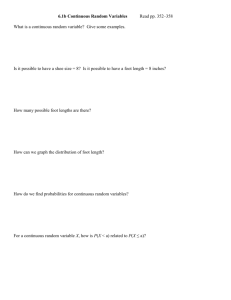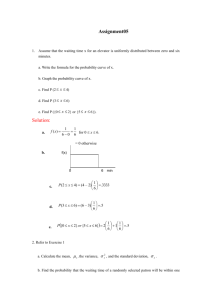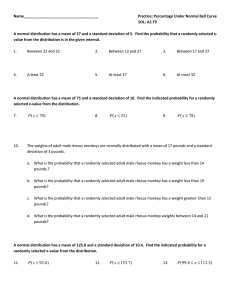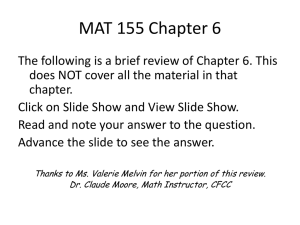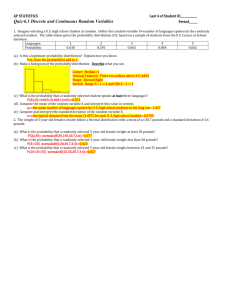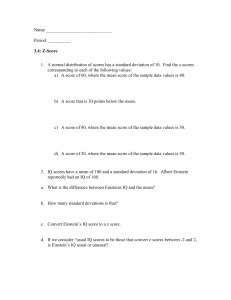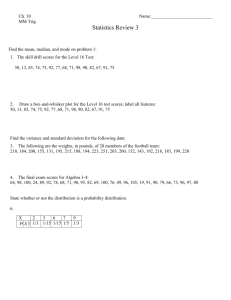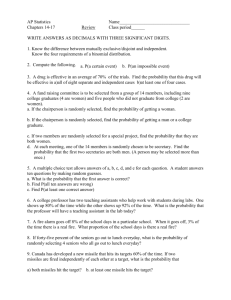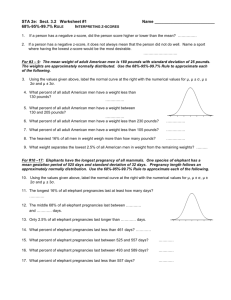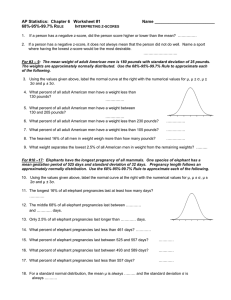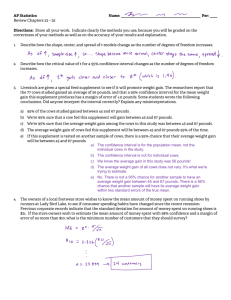Worksheet - White Plains Public Schools
advertisement
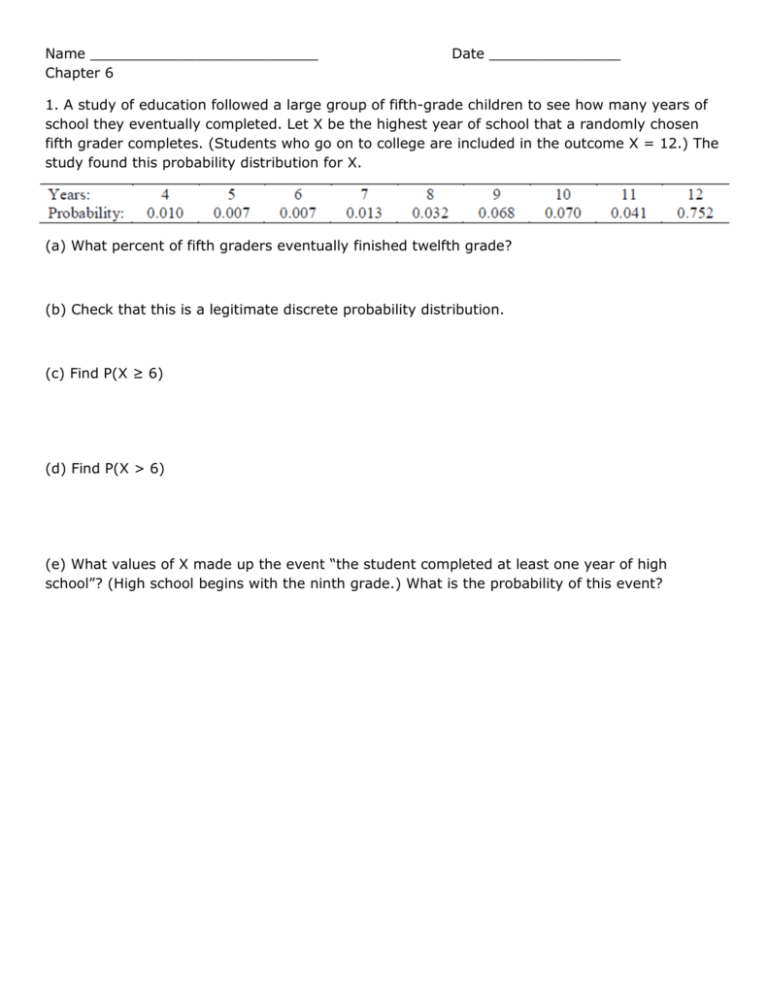
Name __________________________
Chapter 6
Date _______________
1. A study of education followed a large group of fifth-grade children to see how many years of
school they eventually completed. Let X be the highest year of school that a randomly chosen
fifth grader completes. (Students who go on to college are included in the outcome X = 12.) The
study found this probability distribution for X.
(a) What percent of fifth graders eventually finished twelfth grade?
(b) Check that this is a legitimate discrete probability distribution.
(c) Find P(X ≥ 6)
(d) Find P(X > 6)
(e) What values of X made up the event “the student completed at least one year of high
school”? (High school begins with the ninth grade.) What is the probability of this event?
2. The length of human pregnancies from conception to birth varies according to a distribution
that is approximately normal with mean 266 days and standard deviation 16 days.
(a) What percent of pregnancies last less than 240 days (that’s about 8 months)?
(b) What percent of pregnancies last between 240 and 270 days (roughly between 8 months and
9 months)?
(c) How long do the longest 20% of pregnancies last?
3. The table below gives the distribution of grades {A = 4, B = 3, and so on} in a large class:
Find the average (that is, the mean) grade in this course. Interpret the value in the context of
the problem.
4. Rotter Partners is planning a major investment. The amount of profit X is uncertain but a
probabilistic estimate gives the following distribution (in millions of dollars):
Find the mean profit 𝜇𝑥 and the standard deviation of the profit and interpret BOTH values.
5. The weights of three-year old females closely follow a Normal distribution with a mean of 30.7
pounds and a standard deviation of 3.6 pounds. Randomly choose one three-year-old female
and call her weight X.
(a) Find the probability that the randomly selected three-year-old female weighs at least 30
pounds.
(b) Find the probability that the randomly selected three-year-old female weighs between 31
and 32 pounds.
6. When the Stanford-Binet “IQ test” came into use in 1932, it was adjusted so that scores for
each age group of children followed roughly the normal distribution with mean μ = 100 and
standard deviation σ = 15. The test is readjusted from time to time to keep the mean at 100. If
present-day American children took the 1932 Stanford-Binet test, their mean scores would be
about 120. The reasons for the increase in IQ over time are not known but probably include
better childhood nutrition and more experience in taking tests.
(a) IQ scores above 130 are often called “very superior.” What percent of children had very
superior scores in 1932?
(b) If present-day children took the 1932 test, what percent would have very superior scores?
(Assume that the standard deviation σ = 15 does not change.)

